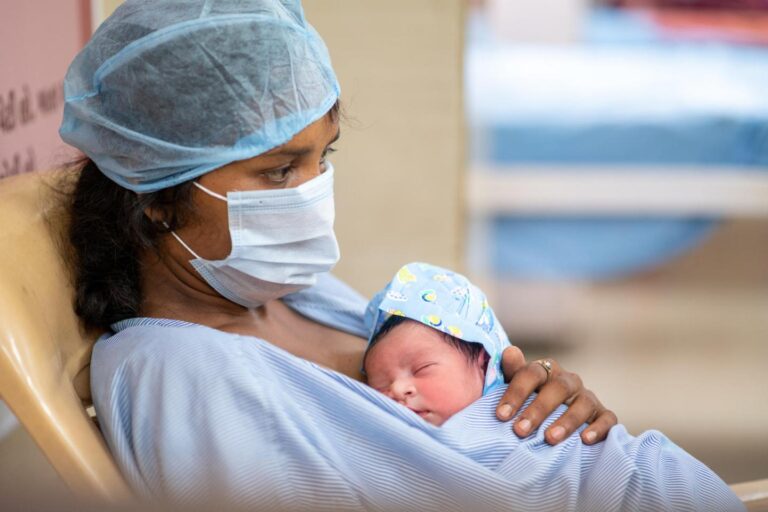
Just 13 percent children fed according to all recommended practices
Around 62 percent children in Jammu and Kashmir are exclusively breastfed as per the recommendations of World Health Organization (WHO) while as just 13 percent children are fed according to all recommended practices, the National Health and Family Survey-5 (NHFS-5) has reported.
Data available with the news agency—Kashmir News Observer (KNO), states that although breastfeeding is nearly universal in Jammu & Kashmir, only 62 percent of children under six months are exclusively breastfed, as the World Health Organization (WHO) recommends. “Ninety-one percent are put to the breast within the first day of life, but only 57 percent started breastfeeding in the first hour of life (as recommended). While exclusive breastfeeding indicators show an improvement since NFHS-4, many infants are still deprived of the highly nutritious first milk (colostrum) and the antibodies it contains,” the survey states.
It reads that it is recommended that nothing be given to children other than breastmilk even in the first three days when the milk has not begun to flow regularly because prelacteal feeds limit the frequency of suckling by the infant and expose the baby to the risk of infection. “However, 18 percent of children are given something other than breastmilk during the first three days. Overall, 88 percent of children continue breastfeeding at one year, and over three-quarters (76%) continue breastfeeding at two years,” the survey reads.
It states that after the first six months, breastmilk is no longer enough to meet the nutritional needs of infants. “Therefore, complementary foods should be added to the diet of the child. However, at age 6-8 months, only 42 percent of children in Jammu & Kashmir receive breastmilk and complementary foods,” the survey reads.
It states that WHO has several recommendations for infant and young child feeding (TYCF) practices for children age 6-23 months. “The key TYCF indicators measure the adequacy of dietary diversity and meal frequency for breastfed and non-breastfed children. One-fourth (25%) of children age 6-23 months are fed the recommended minimum number of times per day, and 37 percent are fed from the appropriate number of food groups. Only 13 percent are fed according to all three recommended practices,” the survey adds. “Micronutrient deficiency is a significant contributor to childhood morbidity and mortality. Vitamin A is an essential nutrient for the immune system. Severe vitamin A deficiency (VAD) can cause eye damage and a higher risk of dying from measles and diarrhoeal disease.”
The survey further states that the Government of India (GoI) recommends that children under five years of age receive vitamin A supplements every six months, starting at age nine months. “In Jammu & Kashmir, more than four-fifths (82%) of children age 9-35 months were given a vitamin A supplement in the past six months, but only 55 percent of children age 6-23 months ate vitamin A-rich foods during the day or night,” it adds.
The survey states that the iron deficiency is a primary cause of anaemia. Eating foods rich in iron and taking iron supplements can help prevent anaemia. “Forty-one percent of children age 6-23 months ate iron rich foods during the day or night before the survey; however, 27 percent of children age group were given iron supplements in the week before the survey,” the survey states—(KNO)
